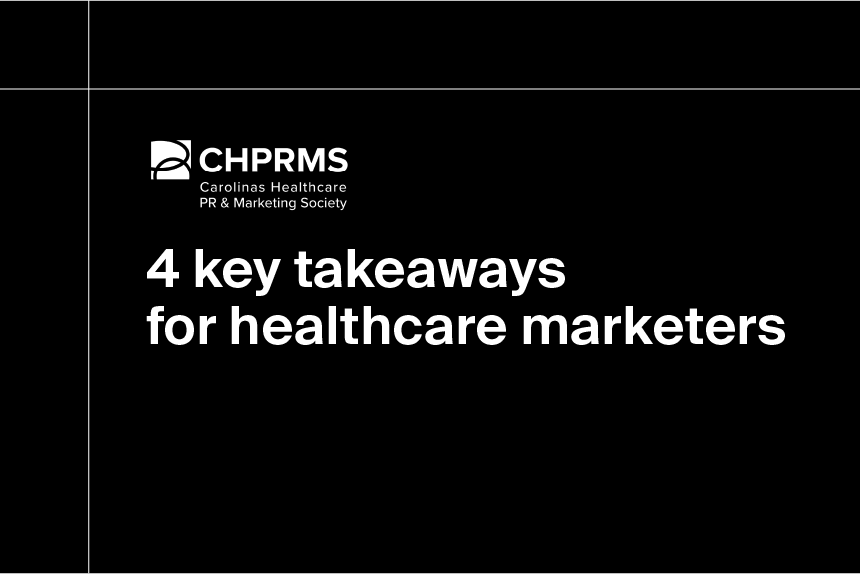For Developmental Disabilities Awareness Month, data delivers a clearer view of the bigger picture
Mar 15th, 2023

March is Developmental Disabilities Awareness Month, a national period dedicated to recognizing and raising awareness around the challenges faced by individuals with developmental disabilities and their loved ones.
Developmental disabilities are a group of conditions that impact a person’s ability to function in everyday life due to physical, learning, language, or behavioral impairments. While data can’t fully convey the experiences and challenges of the people living with these conditions and those involved with their care, it can help us better see the bigger picture and understand developmental disability at the population level.
So what can we take away from the data behind developmental disabilities?
Developmental disabilities are fairly common
These conditions are more common than you probably imagine: According to the Centers for Disease Control & Prevention (CDC), approximately 1 in 6 children in the United States—or about 12 million kids—has a developmental disability.
That rate seems to be going up. Research from the CDC and the Health Resources and Services Administration found that the percentage of children with developmental disabilities increased from 16.2% in 2009 to 17.8% in 2017.
To get this data, the CDC conducts studies like the National Health and Nutrition Examination Survey and the National Health Interview Survey.
Autism, speech/language, and intellectual disorders top docs’ dockets
Not all developmental disabilities are equally visible, which can make it tough to understand the prevalence of these conditions without relying on diagnosis data. Of course, even that data can’t tell us everything—it’s not uncommon for a person with autism to go undiagnosed for much or all of their life, for instance—but it can help us start to establish trends.
The International Classification of Diseases categorizes most developmental disabilities as “Pervasive and specific developmental disorders” under the diagnosis code range F80-F89, with intellectual disorders getting a separate code range (F70-F79) to denote severity. Using commercial claims data, we can get an idea of how prevalent these conditions are based on their relative share of diagnosis claims.
Developmental disabilities by percentage of physician encounters
Rank | ICD-10 code | ICD-10 description | % of total diagnoses for dev. disabilities |
|---|---|---|---|
1 | F840 | Autistic disorder | 41.46% |
2 | F802 | Mixed receptive-expressive language disorder | 14.49% |
3 | F809 | Developmental disorder of speech and language, Unspecified developmental disorder | 9.03% |
4 | F800 | Phonological disorder | 6.98% |
5 | F82 | Specific developmental disorder of motor function | 5.09% |
6 | F801 | Expressive language disorder | 4.77% |
7 | F88 | Other disorders of psychological development | 4.37% |
8 | F79 | Unspecified intellectual disabilities | 2.52% |
9 | F70 | Mild intellectual disabilities | 1.70% |
10 | F819 | Developmental disorder of scholastic skills, unspecified | 1.49% |
11 | F8089 | Other developmental disorders of speech and language | 1.27% |
12 | F71 | Moderate intellectual disabilities | 0.99% |
13 | F8082 | Social pragmatic communication disorder | 0.81% |
14 | F89 | Unspecified disorder of psychological development | 0.68% |
15 | F8081 | Childhood onset fluency disorder | 0.67% |
16 | F810 | Specific reading disorder | 0.54% |
17 | F72 | Severe intellectual disabilities | 0.52% |
18 | F845 | Asperger’s syndrome | 0.48% |
19 | F849 | Pervasive developmental disorder, unspecified | 0.46% |
20 | F804 | Speech and language development delay due to hearing loss | 0.37% |
Fig. 1 Analysis performed using data from Atlas All-Payor Claims database for 2022 under the F80-F89 code range. Commercial claims data is sourced from multiple medical claims clearinghouses in the U.S. Data is updated monthly.
Autism spectrum disorders (ASD) are among the most commonly diagnosed developmental disabilities, representing 44.2% of all 2022 diagnosis claims within the related ICD-10 code range. Around 1 in 44 U.S. children has an ASD, according to the CDC, with boys being four times more likely to be diagnosed than girls.
This broad range of conditions can present a variety of challenges to a person’s social skills, behavioral function, and verbal and nonverbal communicative abilities. Each person with autism has their own unique strengths and weaknesses; while one person may function well in daily life, another may require full-time care. Around a third of children with ASD have an intellectual disability, according to a 2017 report by Autism Speaks.
Speech and language disorders, represented here by codes F802 and F809, are also fairly common, accounting for 23.5% of diagnoses within this category. These include conditions affecting a person’s ability to perceive, produce, or structurally comprehend speech and language.
A person may struggle with speech and language for a number of reasons, including motor/neurological disfunction, physiological abnormalities like cleft palates or facial trauma, hearing impairment, or other functional causes.
Pediatricians are a key resource in the care continuum
Because developmental disabilities typically present in early childhood—with some conditions detectable before birth via genetic analysis—it’s likely no surprise that physicians specializing in pediatrics see more patients with these conditions than any other specialty.
Specialists working with patients with developmental disabilities
Rank | Specialty | % of physicians filing claims for dev. disabilities |
|---|---|---|
1 | Pediatric Medicine | 16.8% |
2 | Other | 14.6% |
3 | Nurse - Nurse Practitioner | 9.6% |
4 | Psychology - Clinical Psychologist | 8.9% |
5 | Family Practice | 7.7% |
6 | Therapy - Speech Language Pathologist | 7.1% |
7 | Psychiatry | 5.3% |
8 | Social Worker - Licensed Clinical Social Worker | 4.0% |
9 | Internal Medicine | 3.6% |
10 | Therapy - Occupational Therapist | 3.5% |
Fig. 2 Analysis performed using data from the Atlas All-Payor Claims database for 2022 diagnosis codes under the F80-F89 code range. Commercial claims data is sourced from multiple medical claims clearinghouses in the United States. Data is updated monthly.
Pediatricians were responsible for nearly 17% of all diagnosis claims related to developmental disabilities in 2022. Definitive Healthcare data shows more than 33,600 pediatricians are currently active in the U.S., in line with U.S. Bureau of Labor Statistics estimates.
Interestingly, around 14.6% of providers working with people with developmental disabilities are listed under the specialty category “other”. These may include behavioral specialists, healthcare administrators, and a broad assortment of other specialists whose credentials may not fall under typical specialty categories.
Our data shows that nurse practitioners also work extensively with patients with developmental disabilities, whether in pediatric offices, family practices, or behavioral health centers. In 2022, they were responsible for about 10% of encounters with these patients.
Early and routine medical intervention is critical for children with developmental disabilities. Research shows that early intervention can have a significant impact on the child’s ability to develop new skills and succeed in everyday life. Luckily, every U.S. state offers services to support patients and families with developmental disabilities for free or at a subsidized cost.
Care for developmental disabilities makes an economic impact
While the government offsets some of the personal expenses associated with care for people with developmental disabilities, those costs still have an impact on state and national budgets, as well as on healthcare systems’ resources.
A study published in The Journal of Pediatrics found that children with intellectual and developmental disabilities utilize emergency and inpatient care at about 1.8 times the rate of the general population. Most of these hospitalizations were due to epilepsy and convulsions.
The annual per capita expenses related to this care were twice as high for patients with developmental disabilities than for the rest of the population: $153 million vs $76 million.
For another perspective, in 2015, the U.S. spent $268 billion for the care of people with ASD alone. The majority of those costs are for adult services (between $175 billion and $196 billion a year), representing about 20% of the $868 billion spent that year for the care of U.S. adults with any disability.
Learn more
Data offers some broader context and scope to the incredibly personal and uniquely individualized experiences associated with developmental disabilities. Developmental Disabilities Awareness Month presents an opportunity for all of us to improve our understanding of these conditions at both the personal and population levels.
For more data-driven insights into the people, procedures, diagnoses, and organizations across the healthcare landscape, sign up for a free trial of our healthcare commercial intelligence solutions.



